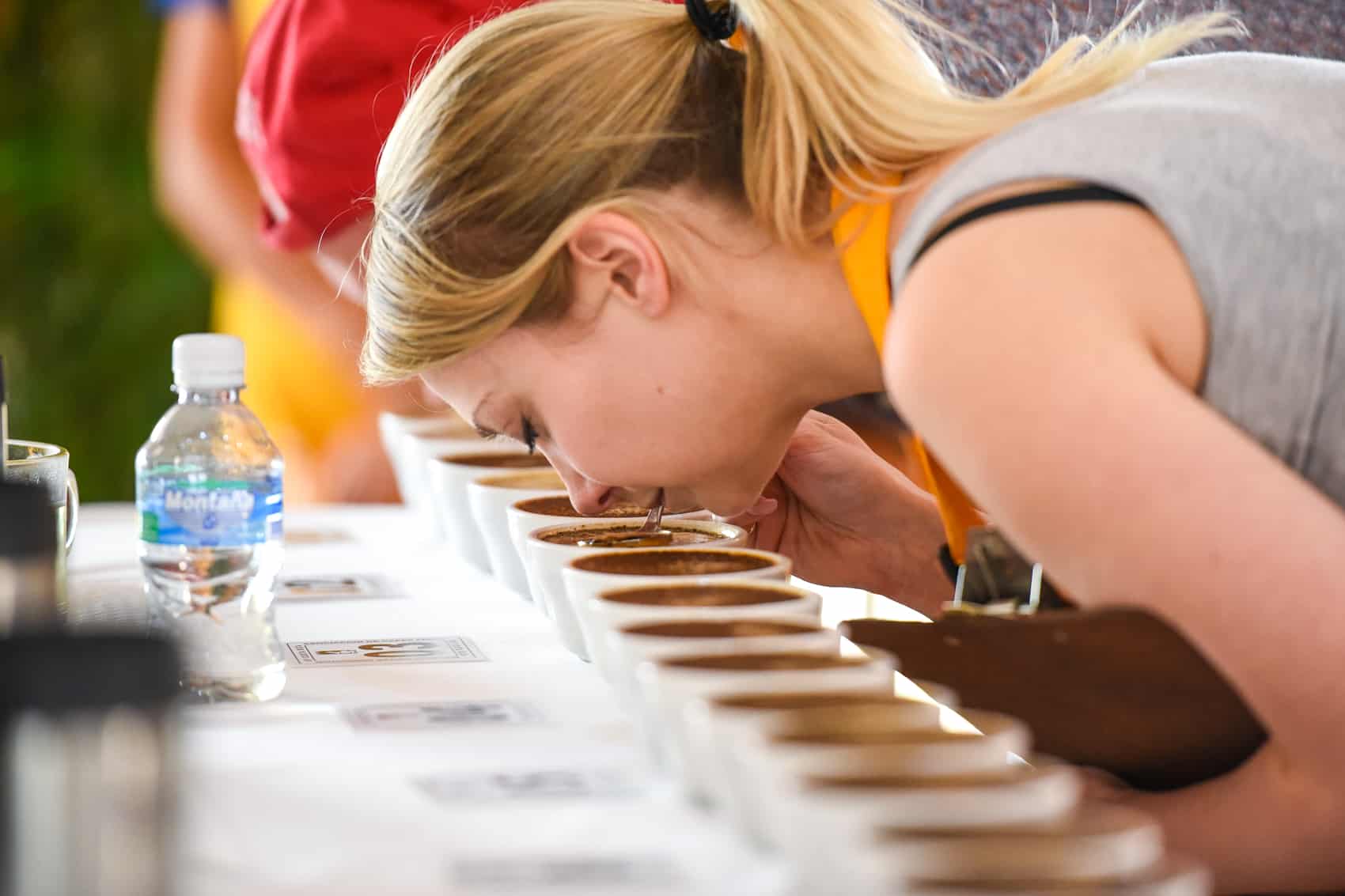A strange symphony could be heard in the Wyndham Herradura Hotel ballroom in San José Wednesday morning. Spoons tapping on tabletops laid down a syncopated beat underneath a chorus of clinking ceramic cups. The melody? Very. loud. slurping. Like quick rips of velcro.
Slurping isn’t just for obnoxious kids. Experts say it’s the best way to taste and smell the full range of a coffee’s flavors.
All this week, a panel of international judges has been cupping Costa Rica’s best coffees to identify the beans worthy of the 2015 Cup of Excellence. The competition is sponsored by the Alliance for Coffee Excellence, a U.S.-based non profit.
The first Cup of Excellence prize was awarded in Brazil in 1999 and the competition has since spread to other coffee-producing countries in Latin America and Africa. Costa Rica has participated for the last eight years.
The prize is designed to inspire small producers to concentrate on growing coffee as a high-quality specialty product rather than as a bulk commodity.
The winning coffee from each participating country is put up for auction, drawing bank-busting bids from elite international roasters. Last year’s winner, Luis Navarro of Monte Copey in Dota, received $4,120 per 46-kilogram lot for his top-ranked coffee at auction in July 2014.
For perspective, coffee futures traded at $174 per 46-kilo lot in New York that same month.
Nearly 130 coffees were submitted for the competition from around Costa Rica this year. The top 60 moved on to judging by an international jury this week.
Noelia Villalobos, executive director of the Specialty Coffee Association of Costa Rica, said the national judges had never seen so many high quality coffees before. They had to raise the bar to pare down the selection to 60, as required by Cup of Excellence rules.
Costa Rica’s strong reputation for quality coffees has made its Cup of Excellence the most coveted event for international judges, Villalobos said.
Ted Vautrinot, a judge in this year’s competition and head roaster at Kéan Coffee in Newport Beach, California, first participated in the Cup of Excellence here in 2011. He said Costa Rican coffee was very good back then, but mostly followed the same profile: clean taste with lemony, milk chocolate notes.
“Now, there are four, five different profiles that are all great Costa Ricans,” Vautrinot told The Tico Times outside the cupping room.
Tasting something with the tongue only gives the judge half the picture, Vautrinot said: salty, sweet, bitter and sour (and umami, but it isn’t very common in coffee.) It’s the nose that picks up most of the coffee’s flavor.
“When you slurp its like squirting perfume in the air, it coats your palate and everything all at the same time. You smell it as you taste it, and that gives you a complete picture of what’s going on,” Vautrinot said.
Sascha Spittel, co-founder of Tres Cabezas Coffee Roasters in Berlin, Germany, said when he judged this week, he was looking for coffee that was unique but still true to Costa Rica. He said boisterous slurping was imperative.
“The louder the noise, the more intense, the more you can define the coffees,” Spittel said. “For people who hear it the first time it reminds them a lot of kindergarten.”
Spittel described the flavor profile he looked for in the coffees under review: “Clean, nice coffees with great acidity, great flavors and sweetness. It’s a mixture of a lot of things. Basically, it’s something out of the ordinary that still represents the uniqueness of Costa Rica.”
Vautrinot said that “something out of the ordinary” would keep people coming back to a particular coffee.
“It’s like any good wine or beer. If there’s not a lot going on there, it’s going to get boring really fast,” he said.






